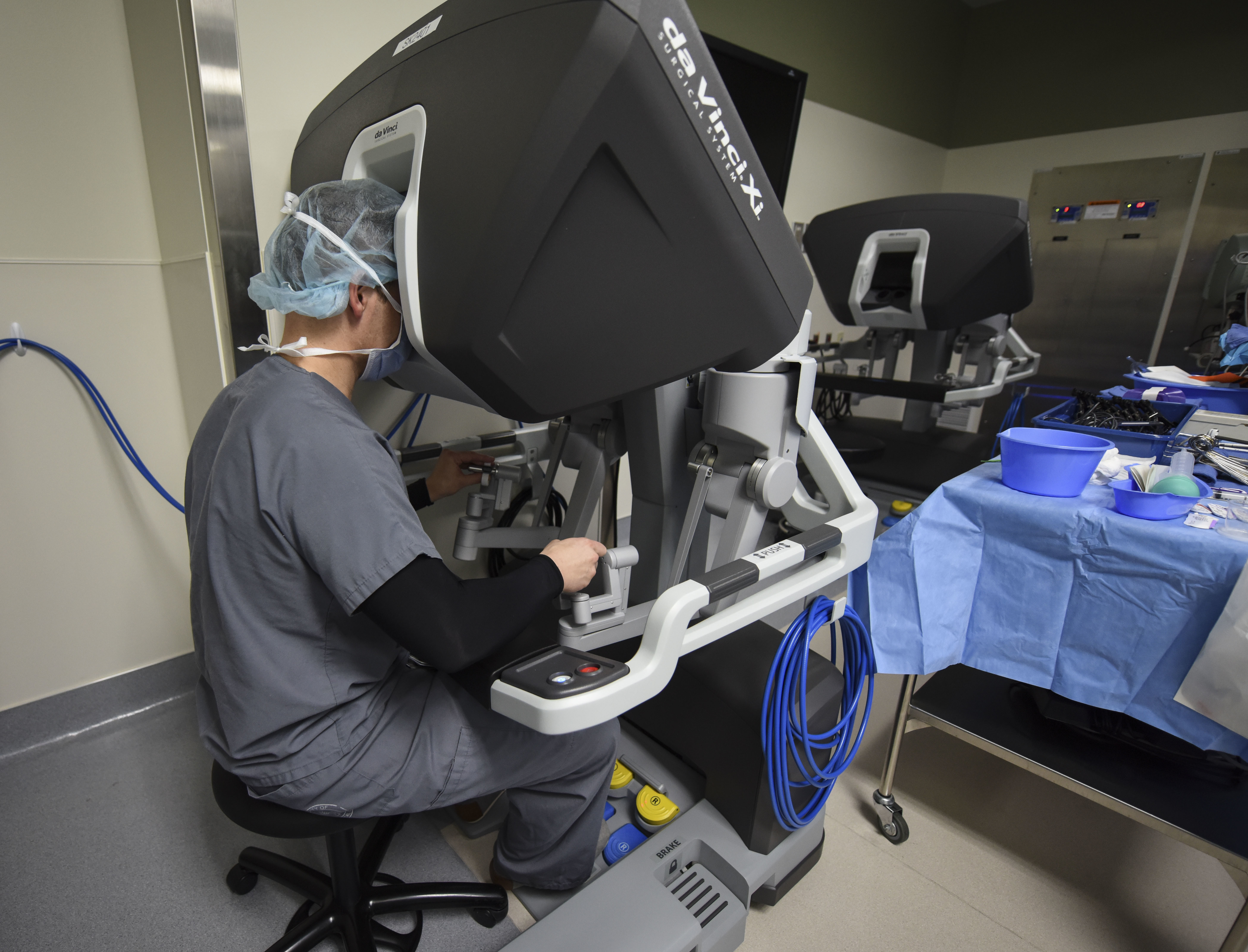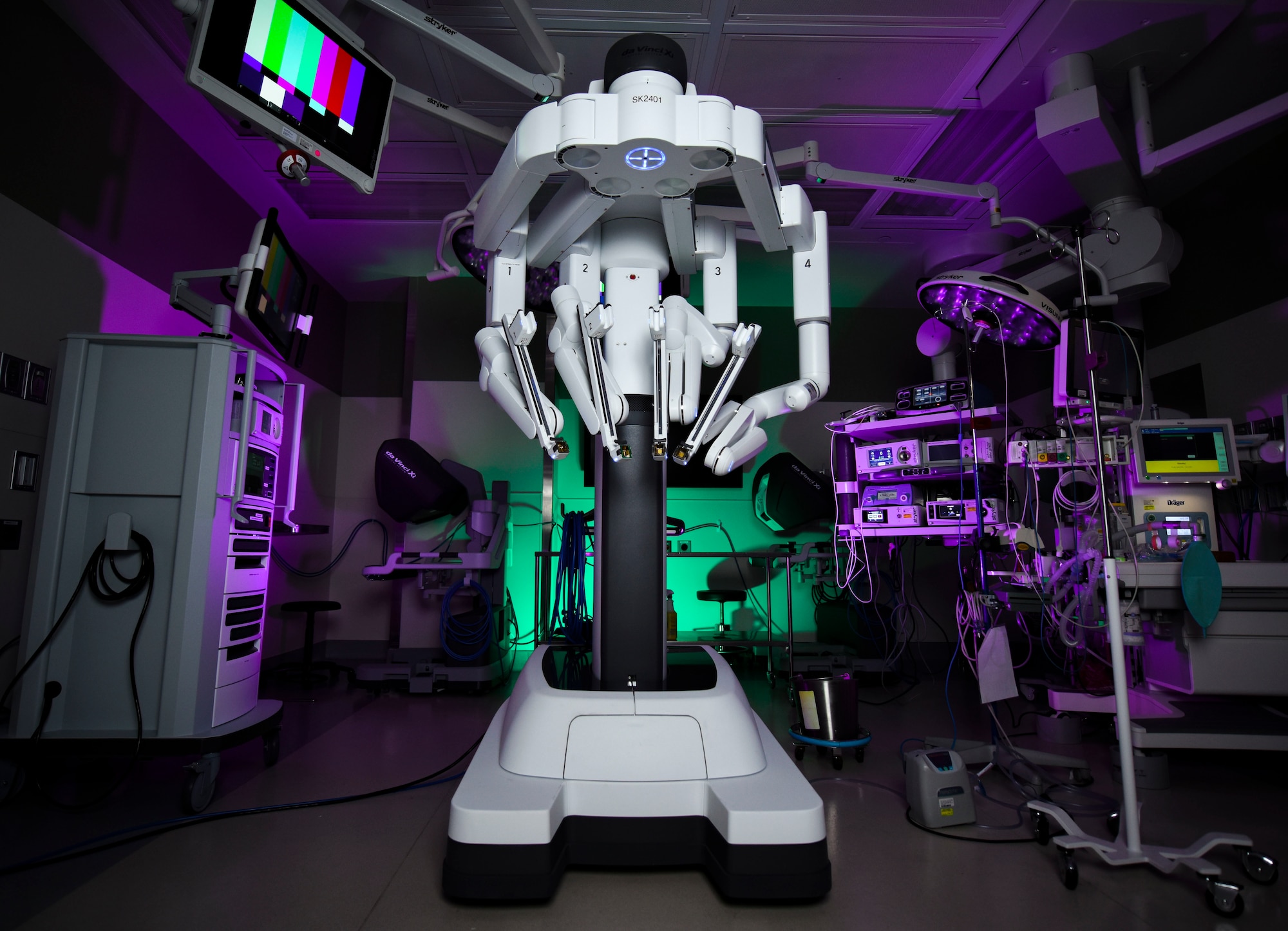Advanced Robotic Surgery: Precision, Minimally Invasive, And Faster Recovery
Advanced Robotic Surgery: Precision, Minimally Invasive, And Faster Recovery - A New Era of Surgery?
Editor's Notes: "Advanced Robotic Surgery: Precision, Minimally Invasive, And Faster Recovery" has published today date. This topic is important to read because it provides an overview of the benefits, risks, and limitations of advanced robotic surgery and helps readers make informed decisions about their surgical options.
After doing some analysis, digging information, made Advanced Robotic Surgery: Precision, Minimally Invasive, And Faster Recovery we put together this Advanced Robotic Surgery: Precision, Minimally Invasive, And Faster Recovery guide to help target audience make the right decision.
| Traditional Surgery | Advanced Robotic Surgery |
|---|---|
| Larger incisions | Smaller incisions |
| More blood loss | Less blood loss |
| Longer recovery time | Shorter recovery time |
| Higher risk of infection | Lower risk of infection |
| More pain | Less pain |
FAQ
This section addresses frequently asked questions concerning Advanced Robotic Surgery, providing comprehensive information about its advantages, procedures, and recovery process.
![]()
Robotic Surgery Line Icons Collection. Precision, Minimally, Invasive - Source cartoondealer.com
Question 1: What are the advantages of Advanced Robotic Surgery over traditional methods?
Advanced Robotic Surgery offers numerous benefits, including enhanced precision and dexterity during surgical procedures, minimizing the size of incisions, reducing scarring and tissue damage, reducing pain and discomfort, and accelerating recovery time.
Question 2: What types of procedures can be performed using Advanced Robotic Surgery?
Advanced Robotic Surgery is applicable in a wide range of surgical specialties, including urology, gynecology, thoracic surgery, and colorectal surgery. Specific procedures commonly performed using this technology include prostatectomy, hysterectomy, nephrectomy, and colectomy.
Question 3: Who is a suitable candidate for Advanced Robotic Surgery?
The suitability of a patient for Advanced Robotic Surgery is determined by various factors, such as the patient's overall health, the complexity of the surgical procedure, and the experience of the surgical team. Patients with conditions such as obesity, bleeding disorders, or previous abdominal surgeries may require further evaluation before being considered for this approach.
Question 4: How does Advanced Robotic Surgery differ from traditional laparoscopic surgery?
While both Advanced Robotic Surgery and traditional laparoscopic surgery involve minimally invasive techniques, robotic surgery provides surgeons with greater precision and control due to the use of robotic instruments. Robotic systems offer a 3D, high-definition view of the surgical site, allowing surgeons to perform complex procedures with enhanced accuracy.
Question 5: What is the recovery time after Advanced Robotic Surgery?
Recovery time after Advanced Robotic Surgery is typically shorter compared to traditional open surgery. Patients may experience reduced pain and discomfort, resulting in a faster return to normal activities. The length of recovery varies depending on the specific procedure performed and the patient's overall health.
Question 6: Is Advanced Robotic Surgery more expensive than traditional surgery?
The cost of Advanced Robotic Surgery can vary based on factors such as the hospital, surgeon's fees, and the complexity of the procedure. While it may be more expensive than traditional surgery, the potential benefits, including reduced recovery time and improved outcomes, should be considered when evaluating the overall value of the procedure.
In conclusion, Advanced Robotic Surgery offers a minimally invasive approach with numerous advantages. It enhances surgical precision, minimizes scarring, reduces pain and discomfort, and accelerates recovery time. The suitability of a patient for this approach is determined on a case-by-case basis, and the cost can vary depending on various factors. Patients considering Advanced Robotic Surgery should discuss their options thoroughly with their healthcare provider.
Tips
Robotic system advances minimally invasive surgery > Air University (AU - Source www.airuniversity.af.edu
Robotic surgery offers several advantages over traditional open surgery, including greater precision, reduced invasiveness, and faster recovery times. Consider these tips to optimize the outcomes of advanced robotic surgery:
Tip 1: Choose an experienced surgeon.
The surgeon's skill and experience play a crucial role in the success of robotic surgery. Seek a surgeon who has performed a significant number of robotic procedures and has a proven track record of positive outcomes.
Tip 2: Follow preoperative instructions carefully.
To ensure a smooth procedure, it is essential to follow the surgeon's instructions regarding diet, medications, and other preparations before the surgery.
Tip 3: Communicate openly with the healthcare team.
Throughout the process, maintain clear communication with the surgeon and other healthcare professionals involved in your care. Discuss any concerns or questions you have to ensure a shared understanding.
Tip 4: Plan for recovery and rehabilitation.
Robotic surgery typically results in a faster recovery than open surgery. Plan for adequate rest, rehabilitation exercises, and support to facilitate the healing process.
Tip 5: Manage expectations realistically.
While robotic surgery offers many benefits, it is essential to have realistic expectations. Robotic surgery is still a surgical procedure and may involve some discomfort or limitations during recovery.
By following these tips, you can enhance the effectiveness of advanced robotic surgery and optimize your overall surgical experience. Advanced Robotic Surgery: Precision, Minimally Invasive, And Faster Recovery can provide further insights into the benefits and considerations of robotic surgery.
Advanced Robotic Surgery: Precision, Minimally Invasive, And Faster Recovery
Advanced robotic surgery has revolutionized surgical procedures, offering unparalleled precision, minimal invasiveness, and faster recovery times. These key aspects have transformed the surgical landscape, providing numerous advantages to both patients and surgeons.
Robotic system advances minimally invasive surgery > Air University (AU - Source www.airuniversity.af.edu
In conclusion, advanced robotic surgery offers a range of benefits that significantly enhance surgical outcomes. The key aspects of precision, minimal invasiveness, and faster recovery have revolutionized surgical procedures, paving the way for more effective and patient-centric treatments. The adoption of robotic surgery continues to grow, expanding its application to a wide range of surgical specialties and further improving healthcare outcomes.
Advanced Robotic Surgery: Precision, Minimally Invasive, And Faster Recovery
Advanced robotic surgery offers a number of benefits over traditional open surgery, including greater precision, less invasiveness, and faster recovery times. Robotic surgery is performed using a robotic system that is controlled by a surgeon. The system translates the surgeon's hand movements into precise movements of the robotic arms, which hold and manipulate surgical instruments. This allows the surgeon to perform complex procedures with greater accuracy and control than is possible with open surgery.

Robotic Mitral Valve Replacement – MINIMALLY INVASIVE HEART SURGERY - Source minimallyinvasiveheartsurgery.wordpress.com
The minimally invasive nature of robotic surgery means that there is less damage to tissue and less pain for the patient. This can lead to a faster recovery time and a shorter hospital stay. In addition, robotic surgery can be used to perform procedures that would be difficult or impossible to perform with open surgery. For example, robotic surgery can be used to remove tumors that are located in difficult-to-reach areas.
Robotic surgery is a rapidly growing field, and new advances are being made all the time. As a result, the benefits of robotic surgery are likely to continue to improve in the years to come.
Key Insights:
- Robotic surgery offers greater precision, less invasiveness, and faster recovery times than traditional open surgery.
- Robotic surgery is performed using a robotic system that is controlled by a surgeon.
- The minimally invasive nature of robotic surgery means that there is less damage to tissue and less pain for the patient.
- Robotic surgery can be used to perform procedures that would be difficult or impossible to perform with open surgery.
- Robotic surgery is a rapidly growing field, and new advances are being made all the time.
Conclusion
Robotic surgery is a significant advancement in surgical technology that offers a number of benefits over traditional open surgery. Robotic surgery is more precise, less invasive, and results in faster recovery times. As a result, robotic surgery is becoming increasingly popular for a wide range of surgical procedures.
The future of robotic surgery is bright. As new advances are made, robotic surgery will become even more precise, less invasive, and more versatile. This will allow robotic surgery to be used to treat an even wider range of conditions and improve the lives of even more patients.
Braga Vs. Lazio: Crucial Europa League Clash On The Horizon, Uruguay's Fútbol: A Comprehensive Guide To The History, Teams, And Players Of The Uruguayan Football League, Miro Tabanelli: Prolific Italian Painter With A Unique Artistic Style, Live Earthquake Updates: Real-Time Magnitude, Location, And Safety Information, Busan KCC Egis: South Korea's Rising Esports Powerhouse, Jerry Rice: The Greatest Wide Receiver In NFL History, Auburn University: Home Of The Tigers And Academic Excellence, Rick Reigenborn: Sportscaster, Commentator, And Radio Host, Unc Vs Pitt: ACC Coastal Showdown For College Football Supremacy, Stony Brook Seawolves: Ascending To Division I Basketball Dominance,

